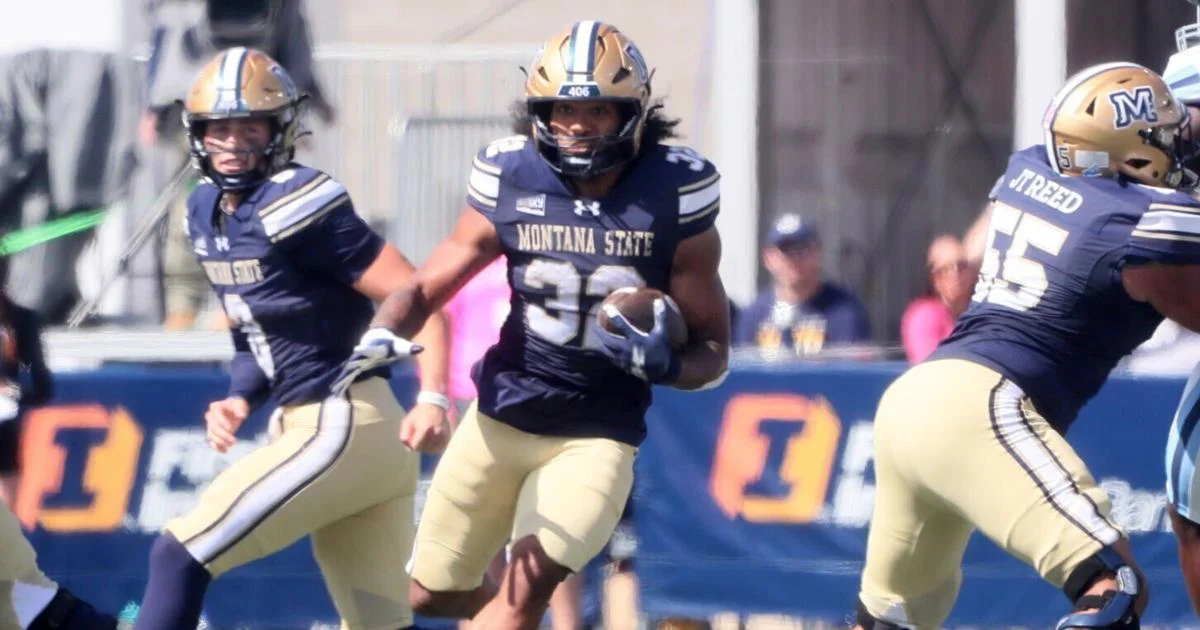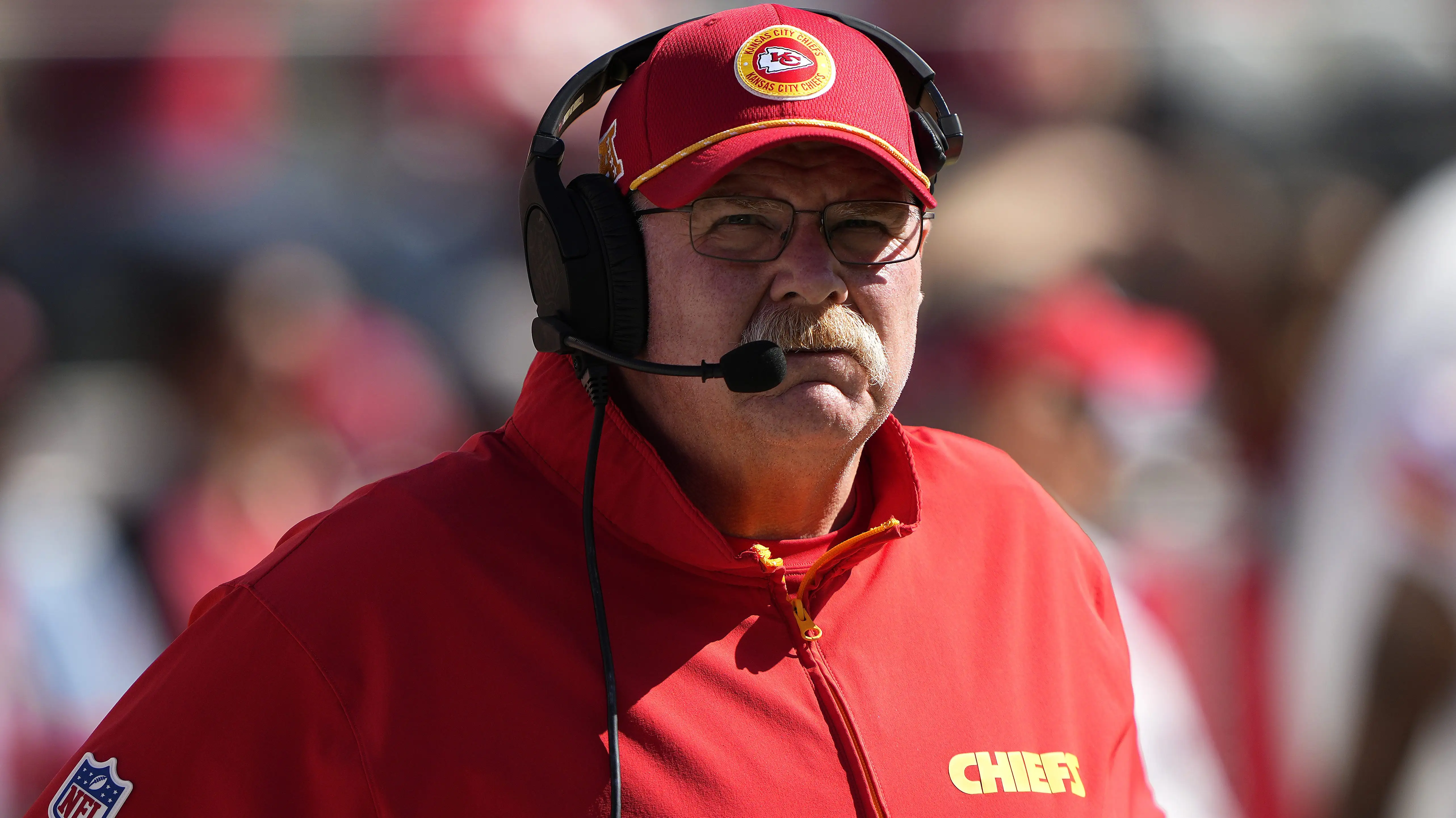
BOZEMAN — On Montana State’s first drive of last week’s football game, quarterback Justin Lamson received a shotgun snap and presented a handoff to running back Adam Jones. All four of San Diego’s linebackers lunged forward.
Lamson faked the handoff, rolled slightly to his right and fired a pass 15 yards down the field to Taco Dowler, who was running an out route to the right. The wide receiver broke a tackle and got a couple good blocks en route to a 45-yard touchdown.
That was one of six passes the Bobcats attempted on the seven-play drive — the third straight week they passed more than they rushed on their first drive of the game. They attempted more throws than runs on opening drives six times in the previous three seasons combined. On opening drives that lasted more than three plays, they did it once (four passes, one rush against Morehead State in 2023).
San Diego’s defense contributed heavily to MSU’s pass-heavy first drive, but the aerial attack also illustrated a shift in MSU’s offensive philosophy. The No. 4-ranked Bobcats (1-2) want to be more of a passing threat than they were the previous three years.
Entering Saturday’s nonconference finale against Mercyhurst, the Cats feel like they’re “evolving toward that” equilibrium, first-year offensive coordinator Pete Sterbick said Monday.
“We can be a lot of things,” said MSU head coach Brent Vigen. “We don’t have to be so dependent on running or passing. We can be balanced. If a team is going to take one thing away and make it harder, we can throw it. Ideally, the more we throw it, the more they think they have to take that away, and then that helps us run it.”
MSU averaged 45.1 rushes and 20.6 passes per game last season, 40 rushes and 19.9 passes in 2023 and 48.1 rushes and 22 passes in 2022. The multitude of blowout wins helped that disparity grow, but those teams leaned on the run from the opening snap. In Tommy Mellott’s three-plus seasons as the starting QB, the Cats ran for almost 300 yards per game on about 6.5 yards per carry while throwing for about 180 yards per game on a little more than 9 yards per attempt.
With Mellott, MSU liked to run the read option, a play in which the QB either hands the ball off or keeps it based on his read of a defender. Mellott developed into a strong passer but remained most dangerous on the ground, as he demonstrated with his 3,543 career rushing yards (third in program history) and 43 career rushing TDs (second). The Butte native ran a 4.39-second 40-yard dash at his pro day and is now a receiver in the NFL.
Lamson tallied 428 yards and 13 TDs on the ground in two seasons at Stanford, and he ran for 116 yards and two TDs (one on a designed run, the other on a highlight-reel scramble) in his first three games as a Bobcat. But his passing proficiency might top Mellott’s. The redshirt junior’s 75.3% completion percentage is currently No. 1 among all FCS quarterbacks.
A 23-of-26 (88.5%) performance against unranked San Diego vaulted Lamson’s atop that leaderboard, but he also threw efficiently against FBS No. 6 Oregon (74.2%) and FCS No. 2 South Dakota State (64.3%).
“At quarterback, you have to have a guy that can make quick decisions, pull and throw, put it in the right spot, see space and know who to read and when based on what concept we have attached to it,” Sterbick said. “Feel good about it so far.”
Vigen wasn’t thrilled with his team’s ground attack against San Diego, especially in the 90-yard, 4.5-yards-per-carry first half. He said he challenged his offensive linemen to “come off the ball” better, and they largely obliged, paving the way to 128 yards on 5.8 yards per rush in the second half.
“The way our short passing game, our RPO game and our run game are all going to complement each other, I think that started to take shape on Saturday,” Vigen said.
San Diego repeatedly put seven-plus defenders in the box that afternoon — a game plan almost certainly influenced by MSU’s run-first reputation.
“It’s still going to be, ‘Take what the defense gives you,’” Vigen said Saturday. “We still have to establish the run game, but if a team is going to give us the perimeter and allow us to throw the ball to our receivers, I think we’re better equipped for that than we would have been the last few years.”
While imperfect, MSU’s reshuffled O-line has provided enough protection to let Lamson go through his progressions on most drop-backs. He also has a stable of good targets, namely Dowler, who’s caught 24 of Lamson’s 64 completions this season.
“Our ability to force a defense to play the width of the field is different this year,” Vigen said. “The last few years, by and large, it was with Tommy being able to use his speed to really force the defense into that conflict. Now it can be done a little bit more with spitting the ball out to Taco, in particular. He doesn’t have to be the only one, but he’s been a primary one. And when we can get him in space, he’s a problem.”
So far this season, the Cats are averaging 158 rushing yards on 37 carries per game (4.3 yards per attempt) and 219.3 passing yards on 30.3 throws per game (7.2 yards per attempt).
“You look at it and say, ‘How can we make them a one-dimensional team?’” said Mercyhurst head coach/defensive coordinator Ryan Riemedio. “More times than not, you’re looking to make them a throwing dimension because now you can do some different things in your blitz packages. … But then you look at it and think, ‘Well, they’re passing just as well as they run the ball.’”
MSU’s base offense uses 11 personnel (one RB, one tight end, three WRs), but the Cats also ran a couple plays against San Diego in 21 personnel (two RBs, one TE, two WRs) and frequently were in 12 personnel (one RBs, two TEs, two WRs).
Midway through the third quarter against San Diego, TEs Rocky Lencioni and Rylan Schlepp lined up behind right tackle Cedric Jefferson and ran to the left side as lead blockers for Jones, who took the handoff from Lamson in shotgun formation and bounced out to the left for a 25-yard gain.
Three plays later, Lencioni and TE Hunter Provience lined up next to left tackle Braden Zimmer and helped open up a hole for Julius Davis, who received the handoff from an under-center Lamson and rushed for a 17-yard TD.
“I like our tight ends, along with our five linemen,” said Sterbick, who utilized 12 personnel successfully at his previous program, Colorado School of Mines. “Then playing that defense, they have a seven-man presence with their box on every first and second down. That’s kind of what they hang their hat on. So you want to match the box, numbers-wise.”
MSU’s ability to run and pass out of 12 personnel sets can keep defenses “on their toes,” Lamson added.
The Cats haven’t achieved the perfect balance they crave. They finished with 349 yards on 4.9 yards per play in their 30-24 double-overtime loss to SDSU on Sept. 6, and their offense only generated 10 points in regulation (Sterbick credited SDSU defensive coordinator Brian Bergstrom for doing “a great job of mixing things up” and praised the Jackrabbits’ D-line, specifically D-tackle Kobe Clayborne, who Sterbick said is “about as good as you’ll see at our level”).
With sacks excluded, Lamson nearly rushed for as many yards (118) as he passed for (123) against SDSU, and he did it on 20 carries — a number much higher than Vigen and Sterbick would prefer, they said. Most of those runs came on scrambles, including one on the final play of regulation in which he didn’t throw to a wide open Dane Steel.
“I’ve got to be better about having good pocket presence,” Lamson said. “Sometimes you see something and you’re like, ‘Oh, I should take off,’ but it’s not actually there. Those are things you’ve got to get better at as the year goes on.”
Lamson’s pocket presence and MSU’s ground game will likely make leaps when starting center Burke Mastel returns from his hand injury. MSU’s passing game should also get a boost when first-string “Z” receiver Chris Long comes back from his leg injury (both are fairly close to full health, according to Vigen).
Long is especially dangerous downfield, so his return will add another dimension to MSU’s increasingly unpredictable offense.
“We’re not satisfied, and we’re never going to be,” Sterbick said. “I just want our guys to stay hungry. I think there are better things coming for us.”
Victor Flores is the Montana State Bobcats beat writer for 406 MT Sports. Email him at victor.flores@406mtsports.com and follow him on Twitter/X at @VictorFlores406
Love
0
Funny
0
Wow
0
Sad
0
Angry
0
Be the first to know
Get local news delivered to your inbox!
* I understand and agree that registration on or use of this site constitutes agreement to its user agreement and privacy policy.
Victor Flores
Sports Reporter
Get email notifications on {{subject}} daily!
Your notification has been saved.
There was a problem saving your notification.
{{description}}
Email notifications are only sent once a day, and only if there are new matching items.
Followed notifications
Please log in to use this feature
Log In
Don’t have an account? Sign Up Today



